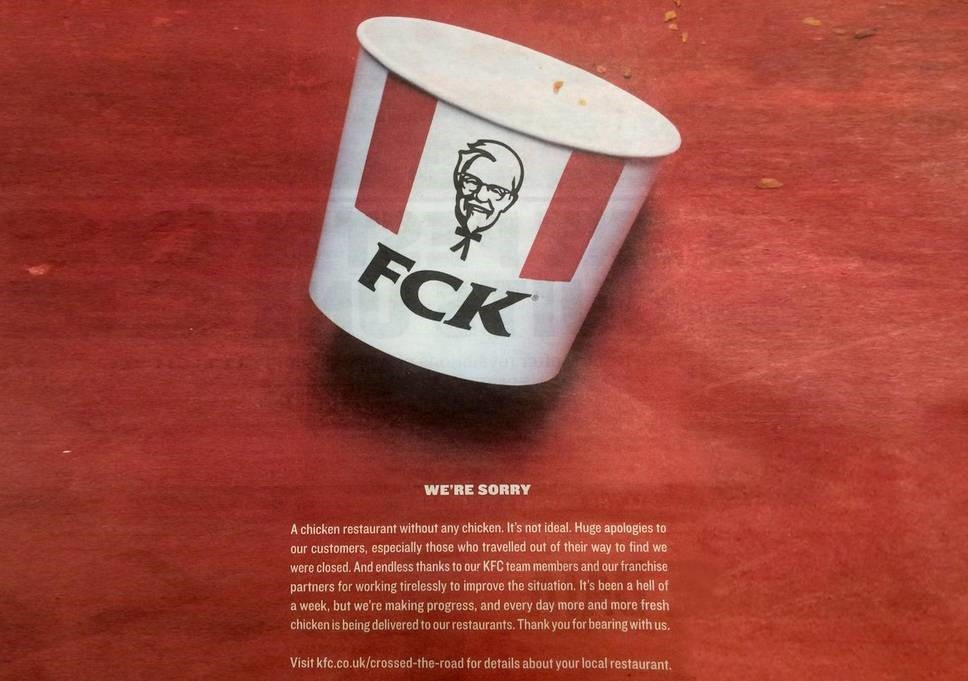Real-Time Marketing
Social media and mass media are constantly broadcasting news and events which are on everyone’s lips. Just think about the media coverage of the SuperBowl or the night of the Oscars. Events like these should ring a bell in a marketer’s mind: they offer you the opportunity of creating unconventional and low cost social campaigns, which immediately capture the consumers’ attention.
Real time marketing is indeed one of my favorite forms a campaign can take, as it doesn’t immediately qualify itself as a promotion of a product, but instead as a creative and eye-catching way of communicating a brand’s message.
If you aren’t convinced yet, let’s quickly see some of the benefits that real time marketing strategies can bring to your brand’s image and reputation:
- It engages customers, who want to participate in the discussion in a more natural and spontaneous way compared to “traditional” marketing.
- It makes an impact, as it allows one to adapt a brand’s message to a specific context in a creative way.
- It’s (nearly) costless with a considerable effect on consumers’ minds.
- It creates a sense of urgency in consumers, which immediately makes the product more attractive.
Now, to better understand what real time marketing is and what it needs to be successful, let’s see some of my favorite examples.
IKEA: the queen of content and real time marketing
IKEA is definitely one of my favorite brands in terms of marketing strategies, to the point of having chosen it as the topic of my bachelor thesis. I believe it is a company that is able to embody all the current trends (sustainability and digital consumer experience, to name a few) in an unique way, which has made its brand image youthful and playful in the eyes of consumers. It is no coincidence that it has won the title of queen of content and real time marketing across the years, thanks to its creative campaigns. Let’s see a few.
Do you all remember when Cristiano Ronaldo, during a press conference at the Euro2020, moved the Coca Cola bottles from the place where they were strategically positioned? Right after that episode, social media exploded with memes which ironically made fun of the situation.
IKEA was not far behind, and a few days later it disclosed its “new” bottle (which was actually the classic glass bottle that the company has been selling for years), which was named… guess what? Cristiano! But it doesn’t end here, as the caption reads as follows: “reusable bottle for water only”.
Another time when IKEA used its well-known irony was in 2019, when Apple announced a brand new Mac Pro sold at the modest sum of $5,999. Among its several features, one was noticed by IKEA and reused in its campaign: the shape, which resembled that of a cheese grater. IKEA therefore created its own cheese grater, described as the iDEALISK grater “designed for apples”.
This is not the first time the Swedish brand made fun of the giant tech company: a couple of years before IKEA made fun of the iPhone X’s in the new ad campaign promoting its new line of lamps. Again, in 2015 IKEA Singapore made fun of Apple iPad launch video in their new catalog advertisement. In particular, it invited the interested parties to “experience the power of a bookbook”. Fortunately, Apple isn’t touchy but has a strong sense of humor. The mockery has brought the two brands to team up to create the first virtual furniture showroom: using their iPhone and iPad, consumers are able to overlay IKEA products onto the display and to see exactly how the items will look in their own homes. As they say, unity is strength.
KFC’s chicken crisis
One of the recent, and in my opinion, one of the most brilliant examples of RTM comes from an unusual situation: a chicken shortage in the UK which forced the famous chain to close some of its stores across the country. After a few days of silence, KFC found one of the best ways possible to apologize to its dissatisfied clients: the brand published a series of newspaper and social media adverts where the iconic KFC logo had its letters rearranged to spell out “FCK”.
Also the caption was quite funny, with ironic and colloquial expressions which had the intent of explaining the situation to make amends with consumers.
ASOS’s typo
I really like this example as it shows how flexibility and timeliness can transform a mistake in a successful campaign. In this cases, Twitter is a brand’s best ally. After printing 17,000 bags with a typo – “onilne” instead of “online” – ASOS promptly tweeted on his profile a funny excuse: “Ok, so we *may* have printed 17,000 bags with a typo. We’re calling it a limited edition”. Admitting the mistakes makes brands look more human and also in this case it paid off: 586 comments, 8.5k retweets, and 49k favorites.
Moral of the story: unexpected events, including brands’ mistakes, are a marketer ally, get value from it!
P.S. don’t forget to be ironic!




